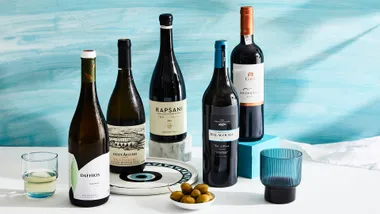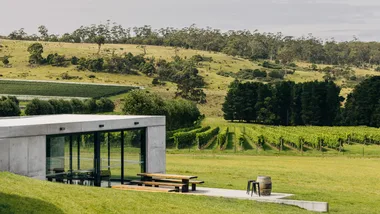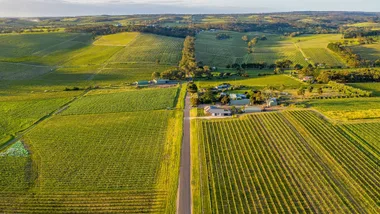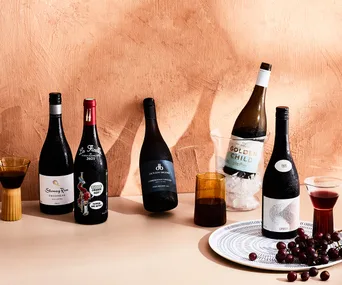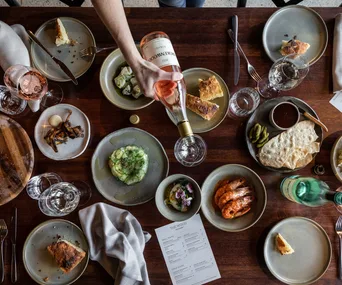In some ways, the natural wine movement and I grew up together (from afar). It was 2011 and I was just starting out as a sommelier when Tom Shobbrook and the late Sam Hughes (in neon pink hot pants, no less) came bursting through my door with their newest vintage of Natural Selection Theory wines (crafted alongside Anton Van Klopper and James Erskine). Twelve years on, that first meeting still lives in my mind and I hold it dear as I reflect on the impact a group of winemakers in South Australia’s Basket Range had on the entire Australian wine industry, for better and worse.
And for a while there, that’s all natural wines needed to be. New style wines, with an interesting story, from small growers and winemakers who were rallying against corporate, “paint by numbers” wine monstrosities. But you can’t drink a story and this is where the “us versus them” mentality turned ugly, as Keelan explains: “It was the ‘Emperor’s New Clothes effect – you couldn’t critique natural wines without being seen as the ‘angry conventional winemaker’.” Or for me it was being told by a fellow sommelier that “you just don’t get it” when I’d question the obvious issues.
There were also internal pressures within the group of winemakers of natural wines to conform to a “zero additions” rhetoric. “I don’t want to be told what to do or be pressured by anyone,” explains Gareth Belton, winemaker and owner of Gentle Folk in South Australia.
Now Belton joins the influx of former “natty wine” winemakers who are rejecting the strict natural wine tenets to concentrate on just making excellent fault-free wines. These winemakers are not ashamed to use sulphur or to intervene when required and many share a deep focus on sustainable practices (with a heavy focus on certification). They are joined by winemakers who never subscribed to the natural wine label but always made wines that focused on place and a controlled “minimal intervention” ethos. I call this collective, “the post-natural wine movement”.
Maybe the term “natural wine” has done its job and it’s time we move past it because when we confine ourselves we leave no room for new possibilities. My hope is that we’ve moved past this need to label our wines, wine bars and wine lists as “natural”. Belton sums it up best, “Let’s just focus on making nice wine, be good people and be good to our communities.” Long live the post-natural wine era.
“POST-NATURAL WINES” TO TRY
2022 Patrick Sullivan Ada River Chardonnay, Gippsland, VIc, $85.
The culmination of Pat Sullivan’s Gippsland journey. As the man himself says, “I just really want to make chardonnay” and what an electric and vibrant chardonnay it is. Add sage
and rosemary baked chicken with a creamy lemon sauce and you’ve got a delicious Friday night dinner.
2022 Si Vintners Baba Yaga, Margaret River, WA, $35
This co-fermentation of skin contact sauvignon blanc and cabernet sauvignon showcases wild aromatics of raspberry, rose petals and sage. Think of it as a turbocharged rosé, perfect for weightier winter dishes.
2022 Brian Wines 3 Pinots 375ml, Tamar Valley, Tas, $20
Brian Wines is the side project of winemakers Joe Holyman and Peter Dredge alongside their friend Mike Bennie. The “3 Pinots” nods to their friendship; bringing together three pinots (noir, gris and blanc) to make something spectacular. Chill the bottle down and add it to your next picnic.
2022 Gentle Folk Village Grenache, Blewitt Springs, SA, $45
Hailing from the sandy soils of Blewitt Springs, redcurrant and raspberry notes on the nose lead you into a plush and juicy palate within the glass that’s just dying to be accompanied with roasted duck with a pomegranate molasses.
2021 Mallaluka Estate Syrah, Canberra District, NSW, $58
A very special limited offering from Sam Leyshon’s home block, showcasing what a talented winemaker can do in a tough vintage. A celebration of cool-climate Canberra Syrah with its mulberry and blood plum characters intertwining with bay leaf. This savoury wine is perfect for winter barbecues.
.png?fit=900%2C750) Kristina Soljo
Kristina Soljo

